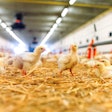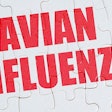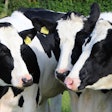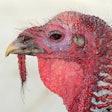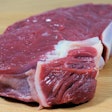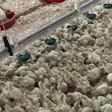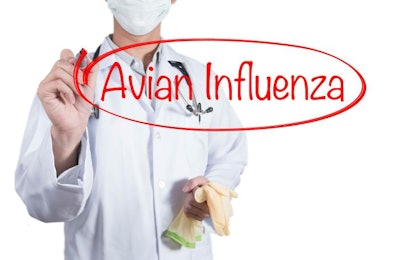
In The Netherlands, the mandatory order to keep poultry under cover has finally been lifted for the first three regions.
However, the return of the highly pathogenic avian influenza (HPAI) virus to a farm in the north of Germany in recent days should serve as a reminder to all European poultry owners that this virus remains a risk this year, even in the height of summer.
From this week, there is an easing of the nationwide ban on housing poultry in the Netherlands.
However, the agriculture ministry states that the ongoing HPAI situation in wild birds allows the housing order for poultry to be lifted only in selected areas. For three regions in the south and east of the country, poultry are again allowed access to outside ranges. This applies to Maas and Waal, West Brabant, and Central Limburg.
The decision to ease the restrictions was taken following expert advice on the risks of poultry becoming infected with the HPAI virus from wild birds in each region.
According to the ministry, the Netherlands has never before experienced such a long period of poultry confinement. Furthermore, the past HPAI season has involved the highest number of infections in wild birds across most of the country.
In announcing the latest easing in restrictions, the Dutch agriculture minister warned that the risk of further HPAI outbreaks in poultry remains high.
The order to keep poultry confined might remain in place in some regions at least until the end of this year, the minster said.
Starting last fall/autumn, the on-going avian influenza season in Europe has been the worst on record, according to a recent EU assessment.
Elsewhere in Europe, mandatory housing orders to protect poultry from HPAI infections has only been lifted in the last few weeks.
For Northern Ireland, the restriction was lifted at the beginning of June. As in other parts of the United Kingdom (U.K.) and the Republic of Ireland, the regulation to confine poultry — commercial, backyard and hobby flocks — came into effect in mid- to late November of last year.
Even when these orders have been rescinded, authorities have strongly advised poultry owners to maintain other biosecurity procedures.
North German state records return of HPAI to poultry
As if to demonstrate that the HPAI risk has not yet passed, first cases of HPAI in poultry for 12 months have been confirmed in Schleswig-Holstein.
Around 2,000 birds have died over the past few days at a farm in the district of Schleswig-Flensburg. The flock has comprised 11,000 geese and 2,500 broiler chickens, according to the latest notification to the World Organisation for Animal Health (WOAH).
In October of 2021, this state recorded the first cases of HPAI linked to the H5N1 virus serotype in Germany. During that month, both poultry and wild birds there tested positive for the virus.
After outbreaks in seven commercial and backyard flocks, the HPAI situation had been declared “resolved” in Schleswig-Holstein in mid-May.
As well as the birds themselves, confirmation of an HPAI outbreak puts huge mental, physical and emotional stress on affected workers, according to an executive of an affected U.S. poultry company.
HPAI outbreaks among European poultry stabilize
As of July 8, 1,766 HPAI outbreaks have been recorded across Europe so far this year, based on the latest update of the Animal Disease Information System by the European Commission (EC).
For the first time this year, the total has remained unchanged from the EC’s previous update. That was dated July 3.
To date, one or more outbreaks have occurred in 20 European countries since the start of 2022. For comparison, this season’s figure has just passed the total of 1,756 outbreaks registered with the EC by 24 European states throughout 2021.
Over the past week, two states in northwestern Germany have officially declared that the HPAI situation has been resolved in poultry. This is according to information supplied to WOAH over the past week.
These declarations apply to North Rhine-Westphalia and Lower Saxony, which confirmed 12 and one outbreak, respectively, on commercial farms.
To WOAH, veterinary authorities of France and the U.K. have each registered one further HPAI outbreak in a backyard poultry flock. These were confirmed on June 29 and July 1, respectively.
While the disease situation in Russia is not monitored by the EC, the nation’s animal health agency has registered six more outbreaks of HPAI in poultry flocks with WOAH.
Since the current outbreak wave began in the Central federal district at the end of May, poultry have tested positive for HPAI at 13 locations. Affected have been a total of around 1,580 birds.
Not only does the number of outbreaks creep up, but also the infection is spreading. At first detected in Ryazan oblast, HPAI has been confirmed more recently also in the Kursk, Kaluga, and Belgorod regions.
Over the period July 6-11, poultry have tested positive for the virus in six backyard flocks, each with between 83 and 186 poultry.
As for the great majority of HPAI outbreaks in Europe in the 2021-2022 season, the HPAI virus isolated from these flocks was the H5N1 serotype.
New cases in wild birds in 12 European countries
For the year to date, HPAI outbreaks in wild birds across Europe reported to the EC notification system have reached 2,195 (as of July 8). In all, 31 countries in the region have registered at least one outbreak in wild species through this system.
For comparison, 2,437 HPAI outbreaks in wild birds were registered with the EC’s system — also by 31 European states — during the whole of 2021.
Compared to the EC’s previous report on July 3, a further 73 outbreaks in wild species have been reported to the EC by 11 countries. Of these, 25 were in Germany, 13 in Denmark and the Netherlands, and nine in Norway. There have also been further virus-positive cases in Belgium, Finland, France, Ireland, Lithuania, Spain, and Sweden.
Also registering new cases in wild birds with WOAH has been the U.K. Indeed, two birds that tested positive for HPAI were the first for the British Crown Dependency, the Channel Island of Guernsey.
Meanwhile, the HPAI situation among wild birds in Switzerland is now considered to be closed, according to a recent WOAH notification. A total of 26 birds tested positive for the H5N1 HPAI virus serotype at three locations between November of last year and March.
View our continuing coverage of the global avian influenza situation.





